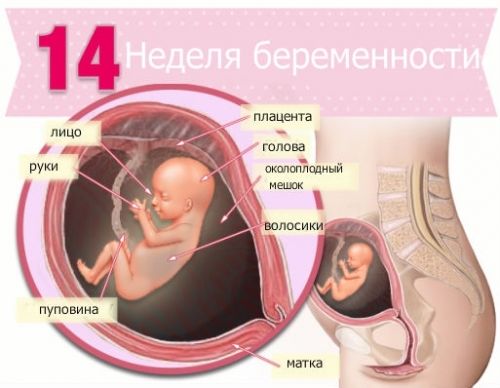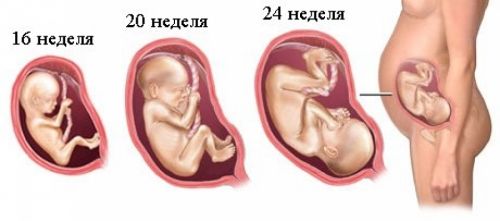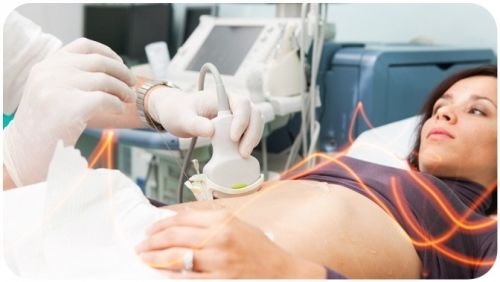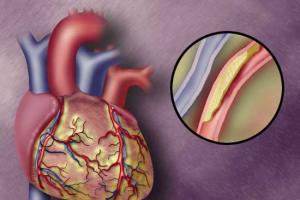When the first trimester ends, a quiet time comes for a pregnant woman. Toxicosis, which accompanies many women at an early stage of pregnancy, is forgotten, a gynecologist has been chosen, and the first medical examination has been completed. The expectant mother can relax and enjoy the changes in her body.
Women who are pregnant for the first time are interested in what week of pregnancy the 2nd trimester begins? The entire period of pregnancy is divided into trimesters. Each trimester consists of 3 months. How to count weeks if the month ends on a partial week? Gynecologists traditionally assign 13 weeks for the 1st trimester. The second trimester starts at 14 weeks. It lasts 13 weeks. Its end is considered the 27th week of pregnancy.
Changes in the mother's body
By week 14, a woman is transformed. The rapid growth of the uterus leads to external changes in its figure. In a pregnant woman, rounded shapes appear, the mammary glands increase and the belly grows. Do not wear tight clothing and tight underwear. Nothing should interfere with the development of the fetus. Tight clothing will not only hamper the movement of a woman, but will also adversely affect the development of the child.
The internal organs of a woman undergo changes. The growing uterus changes their position, does not allow them to fully work. This may cause discomfort. In order not to burden the pancreas, liver, kidneys and other organs, dietary restrictions must be observed.
Fatty, spicy, fried foods are best avoided. Eating a large number of cakes and muffins will not only lead to excess weight, but also provoke heartburn in the stomach, nausea, and bile release. The gynecologist at the next weigh-in will advise you to stick to the diet.

The second trimester is the rapid growth of the uterus. It presses on the diaphragm and it becomes difficult for a woman to breathe. The doctor advises to move more, but there should not be any sudden movements. Calm walks with a sedate step will contribute to even breathing. Ventilation of the premises and frequent changes in body positions will prevent shortness of breath.
The pressure is on the stomach. There is heaviness after eating. Doctors advise to eat often, but in minimal portions. If nausea and heartburn do not go away, then the pregnant woman is shown antacids, which are excreted from the body and are not absorbed into the blood.
The skin undergoes changes. All forms of pregnancy increase, many women develop stretch marks. To give it more elasticity, you can use body creams.
The development of the placenta and mammary glands is often accompanied by edema. The body stores fluid. Soft shoes with flat soles will help ease the situation. Heels will have to be abandoned. It is better to remove the rings so that the pressure on the skin is minimal, and the distribution of fluid in the body becomes uniform.
The second trimester brings inconvenience due to changes in the functioning of the vascular system. During pregnancy, spider veins often appear or varicose veins develop. There is stagnation of venous blood in the legs. This can lead to seizures. The doctor will advise a contrast shower, massage and gymnastics for the legs. Pregnant women are prescribed a vitamin complex containing vitamin E, which is responsible for skin elasticity. The complex must include calcium and magnesium. They strengthen bones and normalize the functioning of blood vessels.

Fetal development
The second trimester will be marked by the rapid growth of the fetus. In the 1st trimester, he had limbs, a torso was determined. The formation of internal organs took place. The second trimester is a qualitative change, when the respiratory organs, digestive and excretory systems develop.
- Liver functions are noticeable: nutrients are filtered.
- Insulin is released into the blood - the pancreas began to work.
- The walls of the stomach and intestines begin to contract.
- The functioning of the kidneys is observed. The baby is able to swallow amniotic fluid, which comes out in the form of urine.
- Oxygen to the fetus comes through the placenta, but the lungs increase in volume, preparing for the first breath. By week 27, the baby's lungs are fully formed.
- Facial bones develop. In the 2nd trimester, clear outlines appear on the face, and the child becomes recognizable.
- At 14 weeks, an ultrasound can determine the sex of the fetus. The sexual organs develop.
- You can talk to the child. He is able to hear. Acoustic vibrations pass through the amniotic fluid, and the fetus reacts to them. In the womb, he is surrounded by many sounds: the beating of the mother's heart, the work of her intestines, the noise of the blood circulation. These sounds are familiar to him, but he can already distinguish his mother's voice from the general noise.
- At 20 weeks, the baby's fingers can be distinguished. He squeezes them into fists.
- The second trimester is the rapid growth of the fetus. By the end of the period, it grows to 28 cm.
- The spleen begins to work. It produces white blood cells. The body of the child stores fat. By week 24, his weight is up to 600 g.
- The second trimester of pregnancy is the first movements of the fetus. A pregnant woman may feel tremors - this means that he is developing reflexes. He is able to straighten the arm and leg.
- By the end of the 2nd trimester, the child can open and close his eyes. Gynecologists say that he begins to form phases of rest and wakefulness.
If the child is born at the end of the 2nd trimester, then doctors can already fight for his life. All organs are just starting to work, but they are fully formed. New technologies help the baby develop the functions of all body systems.

Pathology prevention
Spontaneous delivery in the 2nd trimester is very rare, but some pathologies may occur. During this period, a woman is prescribed a screening, a complete examination. It is carried out at 16-18 weeks. This takes into account the data of the first screening, which took place at the beginning of pregnancy. At the second examination, the woman undergoes:
- analyze for protein, alpha-fetoprotein; by its quantity determine how the fetus develops;
- take blood for examination of free estriol; indicators determine the quality of the development of pregnancy;
- calculate the level of inhibin A; this analysis determines the pathology of the fetus;
- conduct a genetic analysis of hCG; it may indicate Down syndrome, Edwards;
All pregnant women undergo the second screening. This is the last trimester in which hCG can be done. If the ultrasound did not reveal the pathology of the fetus and the pregnancy is developing well, then the blood is not taken for genetic analysis.
In the 2nd trimester, pregnancy fading may occur. This will be determined not only by the examination, but also by the gynecologist.
- In a pregnant woman, the mammary glands decrease.
- Fetal movements stop.
- His heartbeat is not heard.
- The uterus stops growing.
- A woman has brown discharge.
These deviations can be identified by the woman herself. They are visible visually. Screening will confirm or refute the pathology, the gynecologist will prescribe treatment.
Examination may reveal placental abruption. The child will not receive enough oxygen. He starts moving too fast. When the pathology occurs in the second trimester, the growth of the placenta will allow contact with the uterus and the lack of oxygen is compensated.
Otherwise, it can lead to fetal hypoxia and death. When this happens in late pregnancy, a decision is made to urgently remove the fetus. His body has already formed, he will have every chance of survival and proper development.
It is better for a future mother to listen to her body and to the child in the womb. She must know the number and frequency of his movements per day.
Changes in the color of discharge in a pregnant woman or leakage of amniotic fluid - all this should alert a woman. These pathologies will require treatment in a hospital. In the middle of pregnancy, such a pathology as uterine tone occurs. A woman can identify this by the following symptoms:
- compressive pain in the lower abdomen;
- contraction of the uterus;
- the stomach becomes hard;
These sensations must be reported to the gynecologist immediately. The tone of the uterus can be reduced by certain therapy.
The main task of a pregnant woman is to set herself up for a successful outcome of pregnancy. Walking, doing what you love, choosing supplies for your unborn child, shopping for maternity and buying new clothes - all this should calm and cheer up a woman. There are still 3 months left, and she will meet her baby.








